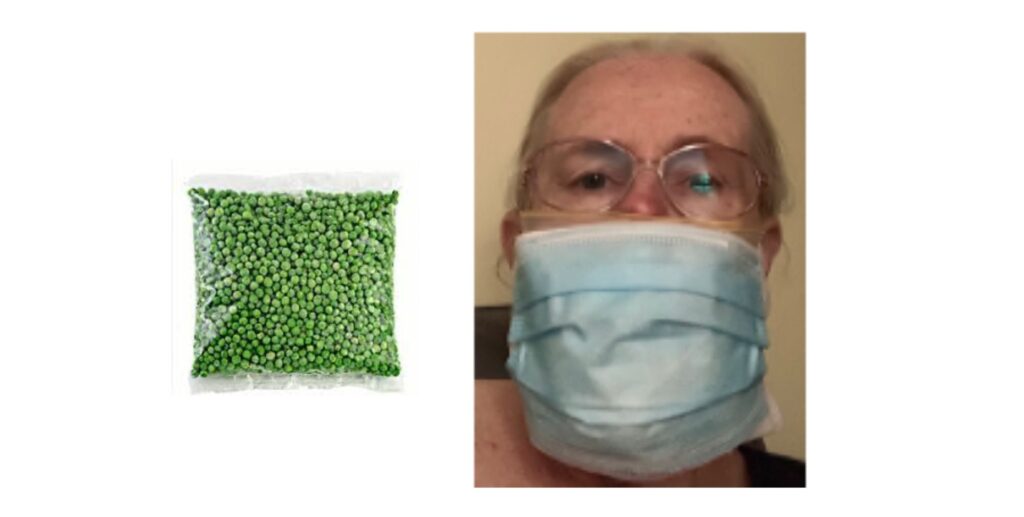

By Leanne.
Share article:
Yes & No
It can differ for everyone as the sensation of pain is subjective and varies in intensity depending on your pain threshold. For most people, there is a period of discomfort that is easy to control with regular over-the-counter analgesia. You may also be prescribed some stronger pain relief to take as recommended. Your pain level will also depend on your previous dental condition, the presence of abscesses and infection, the number of extractions (if any), and any simultaneous bone grafts and sinus lifts performed.
Many people are apprehensive and/or anxious as they anticipate the pain they will endure during and after the procedure. If you’ve ever had a dental abscess or a nasty cavity that has exposed the tooth root, you will know how excruciating dental pain can be. We anticipate it and then set ourselves up for it to be the worst experience. This is often not the case.

In my experience, and from the many accounts I have read, the discomfort was nothing like what we expected it to be.
If you are anxious or suffer from anxiety, talk to your team about this pre-surgery. Some anxiety meds & antidepressants can interfere with anaesthesia. This will be discussed prior if necessary.
Day 0: Following the procedure, you will be pretty numb still, be careful not to bite the inside of your cheeks or tongue and avoid any hot fluids.

Day 1: Post-procedure, you may still feel a little numb as the local block/steroid wears off. You will be swollen, and bruising may begin to appear.

It’s so important to remember to ice, ice, ice, 20 mins on and off for the first few days. Having crushed ice to suck on intermittently is a huge relief and will help with swelling. The swelling and bruising tend to peak between days 3-5 for most people and should begin to subside from then on.
You may be given small ice bead/gel packs in your goodie bag. You can also purchase the latest ugly headgear online that doesn’t even cover your mouth.

Or use Leanne’s nifty invention of frozen peas in a ziplock bag. Cheap, easy, with no postage involved and held in place with a face mask (genius). Don’t be tempted to cook these frozen peas afterwards as they tend to get a bit smelly.

A dull ache may persist for a few weeks post-procedure and stitches can become annoying. For me, they were like barbed wire on the upper arch, post-bone grafting. I had them trimmed at my follow-up appointment and felt instant relief.
Rawness in the mouth, tingling, tightness, throbbing and all kinds of weird sensations will likely be experienced over the coming days and weeks. Various relieving gels and mouthwashes can be purchased over the counter. Check with your clinic if they are safe to use.
Take your pain medications regularly. Set alarms on your phone for each medication to remind you, even during the night. This will help prevent the pain from peaking. Also, keep a diary of what you have taken and when (as you will forget).
The most commonly used pain medications in Australia are anti-inflammatory medications such as Ibuprofen (Nurofen) and analgesic medications Paracetamol (Panadol). You may be prescribed Opioid medication such as Tapentadol (Palexia) or Oxycodone (Endone) for short-term use. Adhere to recommendations regarding driving and other activities while taking these medications.
Tips to help manage pain and discomfort during healing
- Saltwater rinses: these are so good in helping to soothe pain in the gums.
- Cleaning: Keep it simple in the early days. You’ll only need an ultra-soft toothbrush to brush your teeth. Avoid harsh brushing of the gums while the stitches remain in place & use your prescribed mouthwash.
- Palate: (roof of the mouth) may become spongy and swollen and develop a painful burning sensation from the local anaesthetic injections. This can appear later in your healing phase and be the last discomfort to resolve. Ice chips help here.
- Sleep upright: it just works. So get that comfy pillow ready, grab your favourite blanket, load up your Netflix account, and you’re good to go. Keeping your head elevated will also help with any bleeding.
- Soft diet: avoid using straws with smoothies (you don’t want to dislodge a clot and develop a dry socket. Also, avoid spice and pepper to limit sneezing. This can be painful, especially if you’ve had a sinus lift as part of your procedure (do not blow your nose for at least two weeks).
- Avoid hot drinks during the healing phase. Instead, opt for warm fluids and remember to stay hydrated.
- Avoid smoking as it inhibits healing.
- If you have had bone grafting and you must continue to wear a partial or denture, avoid using any adhesive until fully healed.

Disclaimer: The information provided on this platform, including text, graphics, and images, is intended for general informational purposes only. It is not a substitute for professional dental advice, diagnosis, or treatment. For specific dental concerns, it is crucial to consult with a qualified dental practitioner. They will be able to assess your individual circumstances, provide accurate diagnoses, and offer appropriate treatment options tailored to your specific needs
Print article:
Share article:
Subscribe To Leanne's Blog
Ready for your new smile?


